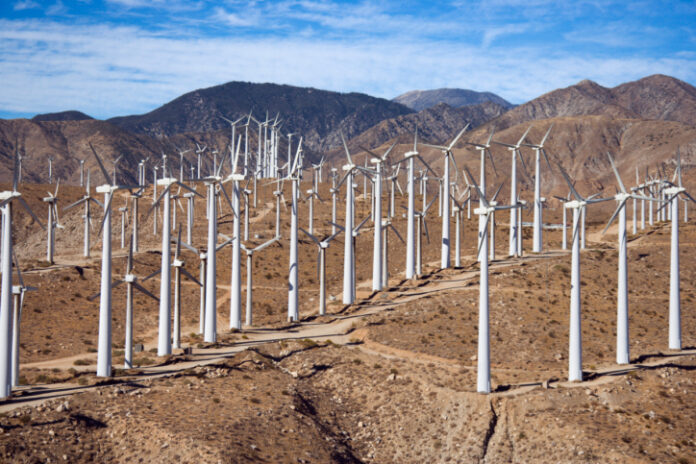In a setback for wind-power developers eager to take advantage of the relatively steady winds and open spaces of the Great Plains, along with generous federal subsidies for renewable energy development, the Board of Supervisors (BOS) in Gage County, Nebraska approved new ordinances restricting the siting and operation of industrial-scale wind projects.
By a vote of six members in favor of the added restrictions and one member opposed, the BOS adopted new regulations on November 17, based recommendations developed by the county’s Planning and Zoning Commission.
The new ordinances address concerns often raised at public meetings about industrial wind facilities, for example, the proximity of the turbines to adjacent properties and the noise generated by the turbines’ spinning rotors.
The new Gage County ordinance requires wind turbines to be located a minimum of twice the height of a turbine to one mile from the property line of a nonparticipating property owner. Additionally, the county lowered the maximum decibel level for sound generated by turbines from five to three decibels.
Commercial Wind Limits
The county’s ordinance refers to industrial wind farms as a “wind energy conversion system” (WECS) or a “commercial wind energy conversion system” (CWECS).
“In order to balance the need for clean, renewable energy resources with the with the protection of the health, safety, and welfare of the residents of Gage County, Nebraska, the County finds these regulations are necessary in order to ensure that all wind energy conversion systems (WECS) are appropriately designed, sited, and installed,” says the ordinance preamble.
Other key restrictions contained in wind project ordinance include: “CWECS shall be designed and placed in such a manner as to minimize to the greatest extent feasible adverse visible and noise impacts on adjacent areas; Colors and surface treatment of CWECS and supporting structures shall, to the greatest extent possible, minimize disruption to the natural characteristics of the site; Reasonable measures shall be taken to mitigate specific adverse visual impacts such as reflections, shadow flicker, and blade glint affecting residences within or immediately adjacent to the project area. Shadow flicker shall nor occur more than 30 minutes per day and not more than 30 hours per year from an occupied residence.” (emphasis in the original).
Bucking State Wind Trend
Gage County’s new ordinances are likely to make it difficult to construct a large scale industrial wind facility in the county.
If so, Gage County will be bucking a statewide trend.
The sparsely populated state of Nebraska has seen a great deal of industrial wind development in the past two decades. As a result, wind power generates the second largest amount of electric power in the state, accounting for 23.63 percent of electricity generated, according to the U.S. Energy Information Administration. Coal-fueled generation, at 51.17 percent, is the largest source of electric power in the Nebraska.
Nationwide Conflict
The conflict between landowners who benefit financially from wind projects and those who view wind turbines as a threat to their property, health, or the environment is playing out across rural America, says Craig Rucker, president of the Committee for a Constructive Tomorrow (CFACT), which co-publishes Environment & Climate News. Rucker continues, it seems Gage County’s BOS sided with those concerned about wind power’s potentially harmful impacts over those seeking to profit from industrial wind.
“As wind farms proliferate around the country, so do concerns about their effect on surrounding communities,” Rucker said. “The Gage County BOS was right to addressing shadow flicker. “This is the effect of the sun (low on the horizon) shining through the rotating blades of a wind turbine, casting a moving shadow that is perceived as a ‘flicker’” said Rucker. “This, along with the turbines’ noise and the ugly environmental footprint these monstrous installations impose on the countryside, is one of the many nuisances resulting from industrial scale wind farm development.”
Bonner R. Cohen, Ph.D., (bcohen@nationalcenter.org) is a senior fellow at the National Center for Public Policy Research and a senior policy analyst with CFACT.



























[…] Link: https://heartlanddailynews.com/2021/12/nebraska-county-institutes-strict-new-wind-power-regulations/ […]
[…] Link: https://heartlanddailynews.com/2021/12/nebraska-county-institutes-strict-new-wind-power-regulations/ […]
[…] Link: https://heartlanddailynews.com/2021/12/nebraska-county-institutes-strict-new-wind-power-regulations/ […]
[…] Link: https://heartlanddailynews.com/2021/12/nebraska-county-institutes-strict-new-wind-power-regulations/ […]